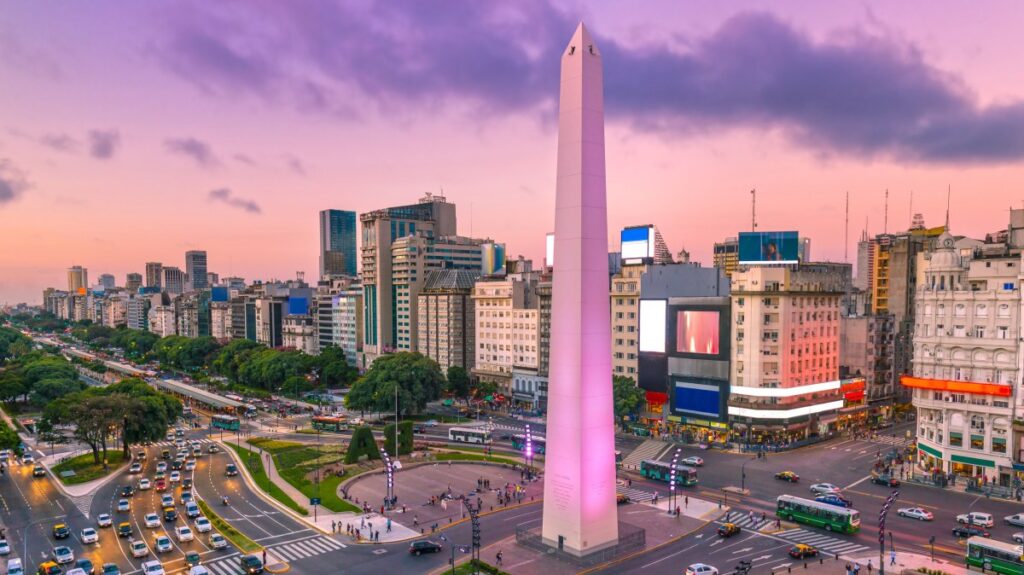
Best Travel Destinations in Argentina
Introduction
Argentina, the second-largest country in South America, is a land of stunning contrasts and rich cultural heritage. From the bustling streets of Buenos Aires to the remote wilderness of Patagonia, Argentina offers a diverse array of travel experiences. Whether you’re an adventure seeker, a history buff, or a lover of fine wines, Argentina has something to offer. In this blog post, we will explore some of the best travel destinations in Argentina, highlighting the unique attractions and experiences that make this country a must-visit for any traveler.
Discovering the Best Travel Destinations in Argentina
- Buenos Aires: The Paris of South America
Buenos Aires, the capital of Argentina, is often referred to as the “Paris of South America” due to its European-style architecture and vibrant cultural scene. This cosmopolitan city is the perfect starting point for any journey through Argentina.
La Boca: Start your exploration in La Boca, a neighborhood famous for its colorful houses and tango music. The Caminito street museum is a must-visit, offering a glimpse into the artistic soul of Buenos Aires.
Recoleta Cemetery: Visit Recoleta Cemetery, one of the most famous cemeteries in the world. Here, you can find the graves of many notable figures in Argentine history, including Eva Perón. The cemetery’s ornate tombs and mausoleums are a reflection of the city’s rich history.
Palermo: Head to Palermo, Buenos Aires’ largest neighborhood, known for its parks, trendy cafes, and vibrant nightlife. The Palermo Soho area is particularly popular for shopping and dining, while Palermo Hollywood is known for its bars and clubs.
- Patagonia: A Wilderness Wonderland
Patagonia, located in the southern part of Argentina, is a vast region known for its breathtaking landscapes, including glaciers, mountains, and lakes. This remote wilderness is a paradise for nature lovers and adventurers.
Los Glaciares National Park: One of the most iconic destinations in Patagonia is Los Glaciares National Park, home to the famous Perito Moreno Glacier. This massive ice formation is one of the few glaciers in the world that is still advancing. Visitors can take a boat tour to get up close to the glacier or hike along the trails for stunning views.
Mount Fitz Roy: For those who love trekking, Mount Fitz Roy is a must-visit. Located near the town of El Chaltén, this mountain offers some of the most challenging and rewarding hikes in Patagonia. The Laguna de los Tres trek, in particular, provides spectacular views of the mountain and surrounding landscapes.
Tierra del Fuego: At the southernmost tip of Argentina lies Tierra del Fuego, often referred to as the “End of the World.” This remote archipelago is known for its rugged beauty and diverse wildlife. The Tierra del Fuego National Park offers opportunities for hiking, canoeing, and wildlife watching.
- Mendoza: The Heart of Argentina’s Wine Country
Mendoza, located in the foothills of the Andes, is Argentina’s premier wine region. Known for its Malbec wines, Mendoza offers a unique blend of natural beauty, outdoor activities, and culinary delights.
Wine Tours: Mendoza is home to over a thousand wineries, many of which offer tours and tastings. The Luján de Cuyo and Maipú regions are particularly famous for their Malbec wines. A visit to Mendoza wouldn’t be complete without sampling some of the world-renowned wines produced here.
Aconcagua: For adventure seekers, Mendoza is the gateway to Aconcagua, the highest peak in the Americas. Climbing Aconcagua is a challenging endeavor, but even those who aren’t mountaineers can enjoy the stunning views from the base or take a day hike in the surrounding Andes.
Thermal Baths: After a day of wine tasting or trekking, relax in one of the many thermal baths located in the region. The Termas de Cacheuta is a popular destination, offering natural hot springs and spa treatments with stunning views of the Andes.
- Iguazu Falls: A Natural Wonder
Located on the border between Argentina and Brazil, Iguazu Falls is one of the most spectacular natural wonders in the world. This massive waterfall system consists of over 275 individual falls, stretching across nearly 2 miles of the Iguazu River.
The Devil’s Throat: The most famous of the falls is the Devil’s Throat (Garganta del Diablo), a U-shaped chasm that plunges over 80 meters into the river below. Visitors can experience the full power of the falls by taking a boat tour that brings them right up to the base of the Devil’s Throat or by walking along the elevated pathways that offer stunning panoramic views.
Iguazu National Park: The Argentine side of the falls is located within Iguazu National Park, a UNESCO World Heritage Site. The park is home to a diverse range of flora and fauna, including jaguars, toucans, and howler monkeys. Visitors can explore the park’s many trails, which offer different perspectives of the falls and the surrounding rainforest.
Full Moon Walks: For a truly unique experience, consider taking a full moon walk through the park. These guided tours allow visitors to see the falls illuminated by the moonlight, creating a magical atmosphere.
- Salta: The Land of Gauchos and Andean Culture
Salta, located in the northwest of Argentina, is a region rich in history, culture, and natural beauty. Known for its colonial architecture, traditional music, and vibrant folklore, Salta offers a glimpse into the country’s Andean heritage.
Salta City: Start your visit in Salta City, known for its well-preserved colonial architecture. The city’s central plaza is home to the beautiful Salta Cathedral and the Cabildo, a historic government building that now houses a museum.
Quebrada de Humahuaca: A short drive from Salta is the Quebrada de Humahuaca, a stunning valley surrounded by colorful mountains. The valley is a UNESCO World Heritage Site and is known for its unique rock formations and indigenous villages.
Train to the Clouds: For an unforgettable experience, take the Train to the Clouds (Tren a las Nubes), one of the highest railways in the world. The train travels through the Andes, crossing deep valleys and towering bridges, offering breathtaking views of the mountains and the desert landscape.
- Bariloche: A Year-Round Adventure Destination
San Carlos de Bariloche, commonly known as Bariloche, is located in the Argentine Lake District and is a popular destination for outdoor enthusiasts. Surrounded by the Andes and pristine lakes, Bariloche offers a wide range of activities year-round.
Llao Llao Hotel: Stay at the iconic Llao Llao Hotel, located on a hilltop overlooking the Nahuel Huapi Lake. The hotel is a historic landmark and offers luxurious accommodations, fine dining, and a range of outdoor activities.
Cerro Catedral: In the winter, Bariloche is a top destination for skiing and snowboarding. Cerro Catedral is one of the largest ski resorts in South America, offering slopes for all levels of skiers, as well as stunning views of the surrounding mountains.
Seven Lakes Route: In the summer, explore the Seven Lakes Route, a scenic drive that takes you through some of the most beautiful landscapes in Patagonia. The route passes by seven pristine lakes, offering opportunities for hiking, fishing, and swimming.
- Córdoba: Argentina’s Cultural Capital
Córdoba, located in the central region of Argentina, is known for its rich cultural heritage, colonial architecture, and vibrant student population. The city is home to some of the oldest universities in Argentina and is a hub for art, music, and theater.
Jesuit Block and Estancias: Visit the Jesuit Block and Estancias, a UNESCO World Heritage Site that includes a series of historic buildings and farms established by the Jesuits in the 17th century. The site offers a fascinating glimpse into Argentina’s colonial past.
Sierras de Córdoba: The Sierras de Córdoba, a mountain range located near the city, is a popular destination for outdoor activities such as hiking, horseback riding, and paragliding. The region is also known for its charming villages, such as La Cumbrecita and Villa General Belgrano.
Paseo del Buen Pastor: In the city, visit the Paseo del Buen Pastor, a cultural center housed in a former women’s prison. The center hosts art exhibitions, concerts, and performances, making it a vibrant part of Córdoba’s cultural scene.
- El Calafate: The Gateway to Glaciers
El Calafate, a small town located in the Patagonian region of Argentina, is the gateway to the stunning Los Glaciares National Park. The town itself is charming, with plenty of shops, restaurants, and accommodations, but the real draw is the nearby glaciers.
Perito Moreno Glacier: The Perito Moreno Glacier, located just outside of El Calafate, is one of the most accessible and spectacular glaciers in the world. Visitors can take a boat tour to get up close to the glacier or walk along the viewing platforms for stunning panoramic views.
Upsala Glacier: Another must-see is the Upsala Glacier, one of the largest glaciers in South America. The glacier is accessible by boat, and the journey offers breathtaking views of the surrounding landscape.
Lago Argentino: Explore Lago Argentino, the largest freshwater lake in Argentina. The lake is fed by several glaciers, and boat tours offer a chance to see icebergs, wildlife, and the stunning Patagonian scenery.
- Ushuaia: The Southernmost City in the World
Ushuaia, located on the southern tip of Argentina, is known as the southernmost city in the world. This remote and rugged region is the gateway to Antarctica and offers a range of outdoor adventures.
Tierra del Fuego National Park: Explore Tierra del Fuego National Park, a stunning natural area known for its diverse landscapes, including forests, mountains, and coastal areas. The park offers a range of hiking trails, as well as opportunities for canoeing and wildlife watching.
Beagle Channel: Take a boat tour of the Beagle Channel, a narrow strait that separates Argentina from Chile. The channel is known for its stunning views, as well as its rich wildlife, including sea lions, penguins, and a variety of seabirds.
End of the World Train: For a unique experience, take a ride on the End of the World Train (Tren del Fin del Mundo), a historic railway that was originally built to transport prisoners. The train travels through beautiful landscapes, including forests, rivers, and mountains.
- Puerto Madryn: A Wildlife Paradise
Puerto Madryn, located on the eastern coast of Argentina, is a top destination for wildlife enthusiasts. The region is known for its rich marine life, including whales, dolphins, and penguins.
Whale Watching: Puerto Madryn is one of the best places in the world for whale watching. Between June and December, southern right whales can be seen in the waters off the coast. Visitors can take a boat tour to get up close to these magnificent creatures.
Península Valdés: Visit Península Valdés, a UNESCO World Heritage Site that is home to a wide range of wildlife, including sea lions, elephant seals, and orcas. The peninsula is also a great place for birdwatching, with over 180 species of birds recorded in the area.
Punta Tombo: For a unique experience, visit Punta Tombo, home to the largest colony of Magellanic penguins in South America. Between September and April, hundreds of thousands of penguins come to Punta Tombo to breed, making it a spectacular sight.
Conclusion
Argentina is a country of incredible diversity, offering something for every type of traveler. From the vibrant streets of Buenos Aires to the remote wilderness of Patagonia, and from the stunning waterfalls of Iguazu to the wine regions of Mendoza, Argentina is a destination that will captivate and inspire.
Whether you’re seeking adventure, culture, or simply a beautiful place to relax, Argentina has it all. We hope this guide to the best travel destinations in Argentina has inspired you to explore this amazing country.
Have you visited Argentina? Share your experiences or favorite destinations in the comments below. We’d love to hear from you! Happy travels and enjoy your journey through this beautiful country.
